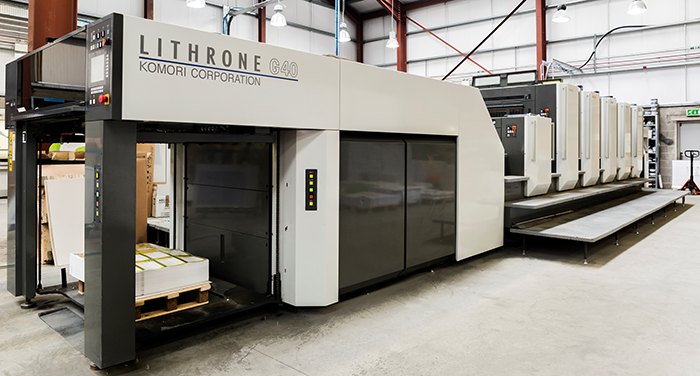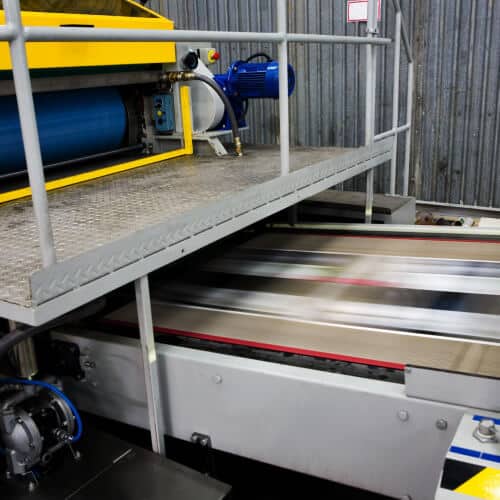The Vital Overview to Understanding Litho Printing and Its Applications
Litho printing stands as a considerable technique in the printing industry, rooted in the concepts of oil and water repulsion. This strategy not only provides high-grade images however additionally accommodates various industrial demands. Its applications vary from marketing materials to product packaging, showcasing its convenience. As the industry adapts to new innovations, the advancement of litho printing elevates questions about its future and significance in an electronic landscape. What exists in advance for this sustaining method?

What Is Litho Printing?
Litho printing, a widely utilized printing method, counts on the principle of oil and water repulsion. This technique utilizes a flat printing surface, usually a metal plate, which is treated to guarantee that the picture areas are receptive to oil-based inks while the non-image areas repel them. The procedure starts with the production of a photo on home plate, commonly via drawing or photographic means. Once the image is prepared, home plate is wetted with water, adhered to by the application of ink. The ink sticks only to the image locations, permitting exact reproduction of graphics and text. Litho printing is preferred for its capability to generate top notch prints with fine detail and vibrant colors. It is commonly used in industrial applications, including papers, publications, and packaging, showcasing its adaptability and effectiveness in meeting the needs of modern printing.
The History of Lithography
Lithography is a modern printing staple, its beginnings map back to the late 18th century when German dramatist Alois Senefelder created the technique in 1796. Originally developed as a technique for reproducing texts and photos, lithography used a level rock surface area to create prints through a chemical process. Senefelder's technology permitted better flexibility and imaginative expression contrasted to previous printing methods.By the 19th century, lithography got extensive approval, becoming a popular selection among artists and authors. It made it possible for the automation of images, maps, and posters, notably influencing the printing sector. The method further progressed with the intro of lithographic presses, boosting efficiency and quality.As the industrial transformation proceeded, lithography adjusted to fulfill the demands of business printing, leading the method for contemporary applications. Today, it continues to be an important technique in various sectors, consisting of publishing, packaging, and art recreation.
Just How Litho Printing Works
A crucial feature of litho printing is its dependence on the concept of oil and water repulsion - litho printing. In this procedure, pictures are moved from a flat surface area, usually a metal or polymer plate, to paper. Home plate is treated to ensure that the locations planned for printing attract ink, while the non-image locations repel it as a result of their affinity for water. The printing starts by dampening home plate with water, which follows the non-image locations. Subsequently, an oil-based ink is applied, sticking only to the intended image areas.When the plate comes right into call with the substrate, the ink is transferred, developing a print. The litho printing process can producing top quality pictures with fine detail. It is commonly used for automation as a result of its efficiency and consistency, making it a recommended method for business printing applications
Benefits of Litho Printing
One remarkable benefit of litho printing is its capacity to generate high-grade images consistently, making it a perfect choice for business projects. This printing technique utilizes a flat printing plate, guaranteeing even ink circulation and sharp details. Litho printing is likewise renowned for its color accuracy, allowing dynamic and true-to-life recreations, which is important for branding materials.Moreover, it sustains a wide array of substrates, including paper, cardboard, and even particular plastics, improving its adaptability. The process is cost-efficient for large runs, as economic situations of range minimize per-unit prices. In addition, litho printing has a fast turnaround time, enabling for efficient production schedules.Its sturdiness likewise implies that published products resist fading, making certain that the end product preserves its visual appeal with time. In general, these advantages make litho printing a favored selection throughout numerous markets, adding to its long-lasting appeal.
Applications of Litho Printing in Company
As organizations increasingly seek reputable and top notch printing solutions, litho printing becomes a crucial gamer in different applications. This method is specifically preferred for producing marketing materials such as brochures, leaflets, and magazines, thanks to its capability to deliver vivid colors and sharp pictures. Furthermore, litho printing is often employed for product packaging services, enabling business to develop appealing tags and boxes that improve item appeal.In the sector of company identification, litho printing contributes in generating specialist stationery, business cards, and promotional merchandise, which assist strengthen brand recognition. Furthermore, it is commonly used in the posting industry for printed products such as publications and publications, where regular quality is critical. In general, litho printing's versatility and efficiency make it an essential tool for companies intending to interact successfully and develop a solid market existence.
Artistic Uses of Litho Printing
Litho printing offers as a functional medium in the domain of printmaking, offering artists a special approach to share their creative thinking. This technique enables for a large range of creative applications, from standard prints to contemporary analyses. By exploring the subtleties of litho printing, musicians can harness its distinct qualities to enhance their work.

Printmaking Strategies Overview
The virtuosity of printmaking incorporates a varied variety of methods, with litho printing standing out for its one-of-a-kind technique to picture creation. This method counts on the concept of oil and water repulsion, allowing musicians to draw directly onto a limestone or steel plate with a greasy medium. Once prepared, home plate is dampened and inked, transferring the image onto paper with stress. Litho printing is commemorated for its ability to generate fine details and abundant tonal variations, making it a preferred option among musicians. Furthermore, the procedure is functional, suiting both typical strategies and modern adaptations. This flexibility enables litho printing to bridge numerous creative styles, enhancing the printmaking landscape pop over to these guys with its distinct attributes and capabilities.
One-of-a-kind Artistic Applications
Exploring the one-of-a-kind creative applications of litho printing reveals its impressive versatility in different imaginative areas. Musicians use litho printing to produce elaborate styles and appearances, permitting expressive and thorough jobs. The procedure assists in the recreation of vivid shades, making it optimal for pictures and fine art prints. Many contemporary artists embrace lithography for its capability to integrate traditional techniques with modern ideas, resulting in innovative art work. In addition, litho printing is frequently used in the production of minimal edition prints, boosting their worth and appeal. The responsive top quality of litho prints adds a distinct measurement, attracting collectors and art fanatics alike. In general, litho printing continues to be a considerable tool for imaginative expression, connecting timeless techniques with contemporary imagination.
The Future of Litho Printing in a Digital World
As the printing industry progresses, litho printing encounters the challenge of integrating electronic innovations to continue to be pertinent. Methods concentrated on digital combination, alongside fads in sustainability and advancement, will certainly shape its future - litho printing. Understanding these dynamics is crucial for industry stakeholders aiming to adjust to a rapidly changing landscape
Digital Assimilation Techniques
A growing variety of litho printing firms are welcoming digital combination methods to remain affordable in a significantly digital landscape. By integrating digital operations, these firms can simplify procedures and boost performance. This assimilation permits real-time data administration and enhanced communication in between departments, minimizing turn-around times substantially. Furthermore, electronic tools make it possible for much better modification and personalization of printed products, dealing with details customer needs. Business are likewise adopting hybrid printing remedies that combine conventional litho techniques with electronic innovations, providing versatility in manufacturing. Leveraging data analytics aids in comprehending market fads and consumer choices, allowing businesses to make enlightened decisions. In general, digital integration is ending up being necessary for litho printing firms aiming to introduce and reply to progressing market requirements.
Sustainability and Innovation Trends

Frequently Asked Questions
What Materials Are Typically Made Use Of in Litho Printing?
The products typically used in litho printing consist of light weight aluminum plates, ink, water, and paper. Each part plays a necessary duty in the printing process, making certain high-quality photo reproduction and effective transfer of ink onto the substratum.
How Does Litho Printing Contrast to Digital Printing?
Litho printing uses remarkable shade uniformity and high quality for big runs, while digital printing masters short runs and customization. Each approach has distinctive benefits, dealing with various demands based on manufacturing range and cost-efficiency.
What Is the Regular Turn-around Time for Litho Printing Projects?
The normal turnaround time for litho printing projects varies, normally ranging from a Homepage couple of days to several weeks. Factors affecting this timeframe include job complexity, amount, and required finishing procedures, influencing general production timetables.
Can Litho Printing Accommodate Custom-made Sizes and Formats?
Litho printing can without a doubt suit personalized dimensions and styles, enabling adaptability in style. This flexibility enables clients to attain one-of-a-kind print results customized to their details needs, enhancing the general performance of their projects.
What Are the Environmental Effects of Litho Printing?
The ecological effects of litho printing find out consist of resource usage, chemical usage, and waste generation. Developments in lasting methods and environment-friendly products are gradually minimizing these unfavorable impacts, advertising a more eco liable approach to printing.